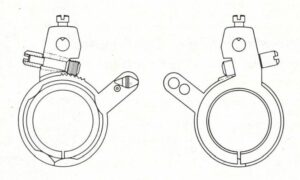“Pare-choc” literally means “shock absorber” in French. But it’s also the name of a company, Parechoc SA, of Le Sentier. Although Incabloc, produced by Portescap SA of La Chaux-de-Fonds, was the industry leader in shock absorbers, Parechoc’s KIF is almost as famous. It’s Coke vs. Pepsi in the Valle de Joux!
Portescap was also famous for the Vibrograf machine, used to check performance of a watch.
1954: Parechoc vs. Incabloc
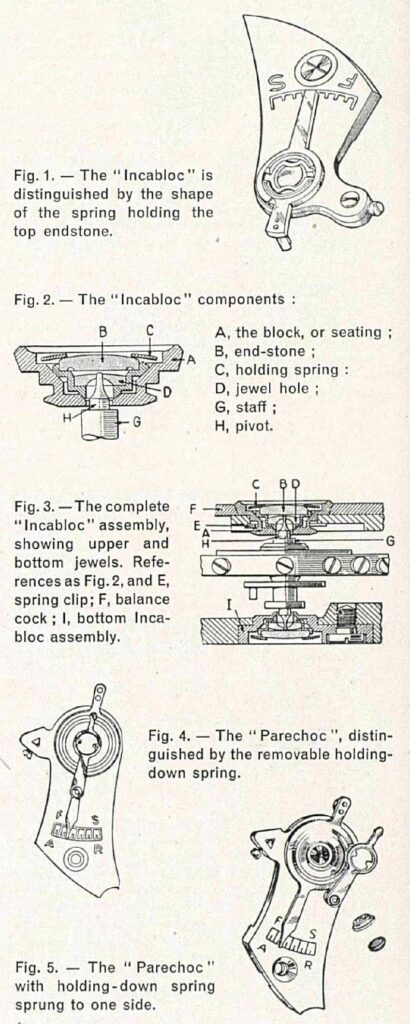
This image comes from an instruction in issue 22 of Eastern Jeweller and Watchmaker showing the difference between Incabloc and Parechoc. Note that the “Parechoc” mentioned here is a blade-type, with a holding-down spring screwed to the top of the balance cock. This was what Parechoc was known for for the first 10 years of its existence. Yet in that same issue, the “clover” style KIF 370 is shown, as it had been since 1951. So although this writer is using “Parechoc” to mean the blade-style spring, the company had already diversified.
It is interesting to see how many variations of KIF have been created by Parechoc over the years, yet Incabloc has remained remarkably consistent. Comparing this 1954 illustration with that in a modern magazine is quite remarkable: They’re basically identical! Incabloc was such a good design it didn’t need updating in over half a century and remains the “gold standard” of shock protection.
1954: Parechoc KIF 370
The earliest ads for Parechoc in the current Eastern Jeweller and Watchmaker archive appear in 1951, in just the fifth issue. If we examine the ad below (taken from issue 22, in 1954) we see that Parechoc specifically advertised this shock absorber as “KIF 370”. This appears to be identical to what has been called “Trior” since 1962 at least.
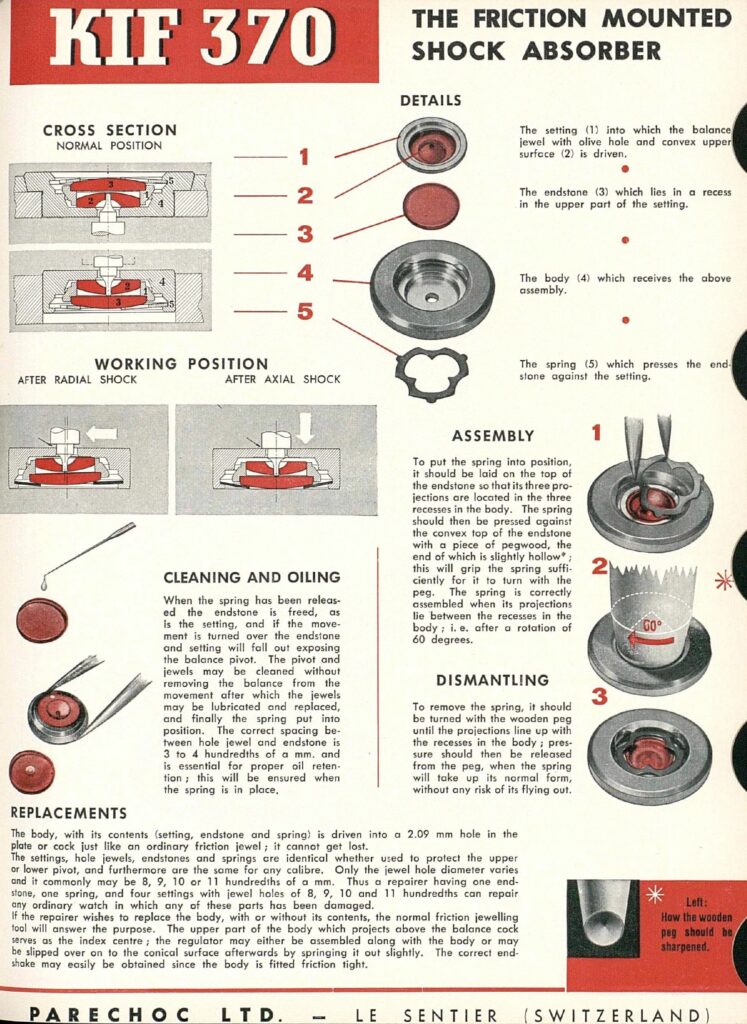
1956: Parechoc KIF “A”
It’s quite confusing what exactly Parechoc meant by “KIF A.” The ad below, from a 1956 issue of EJW, shows what is now known as “Flector.” But just two years earlier, Parechoc contrasted “KIF 210 (370)” with something called “KIF A with blade spring fitted on.” This sounds like the original shock absorber, which used a long blade spring extending onto the bridge as discussed above.
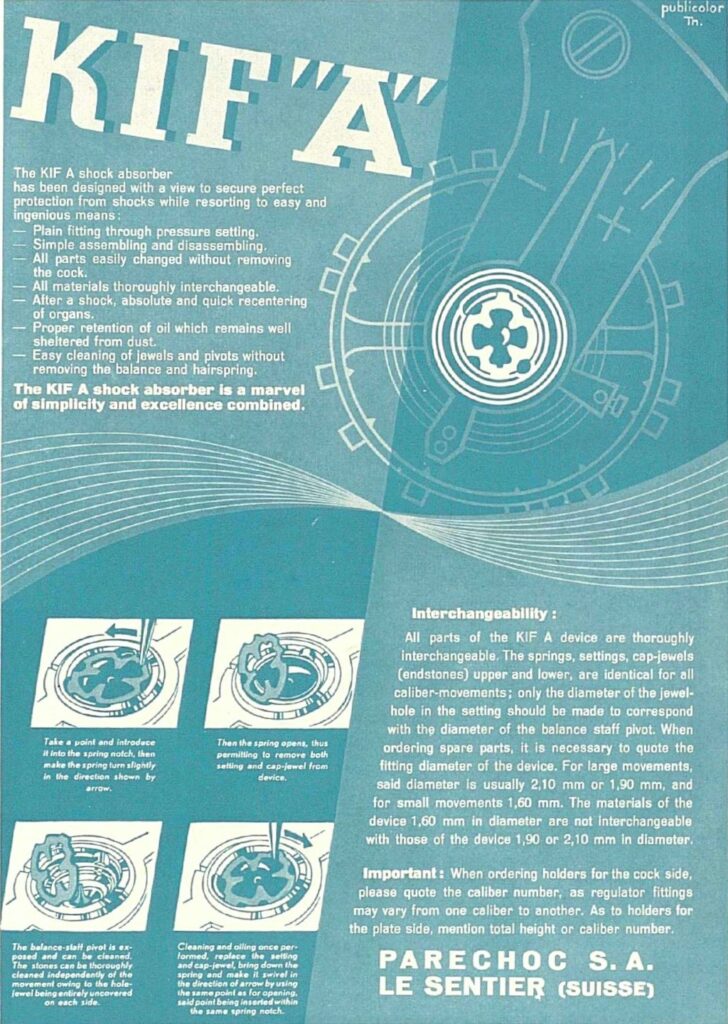
1957: Parechoc Duofix
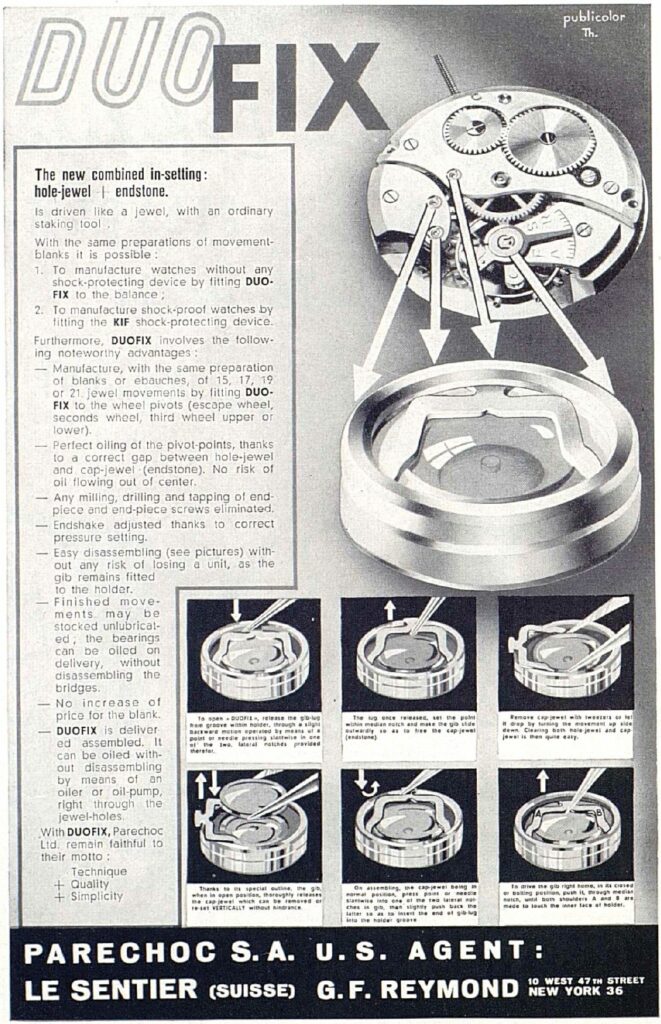
1965: All Versions of Parechoc KIF
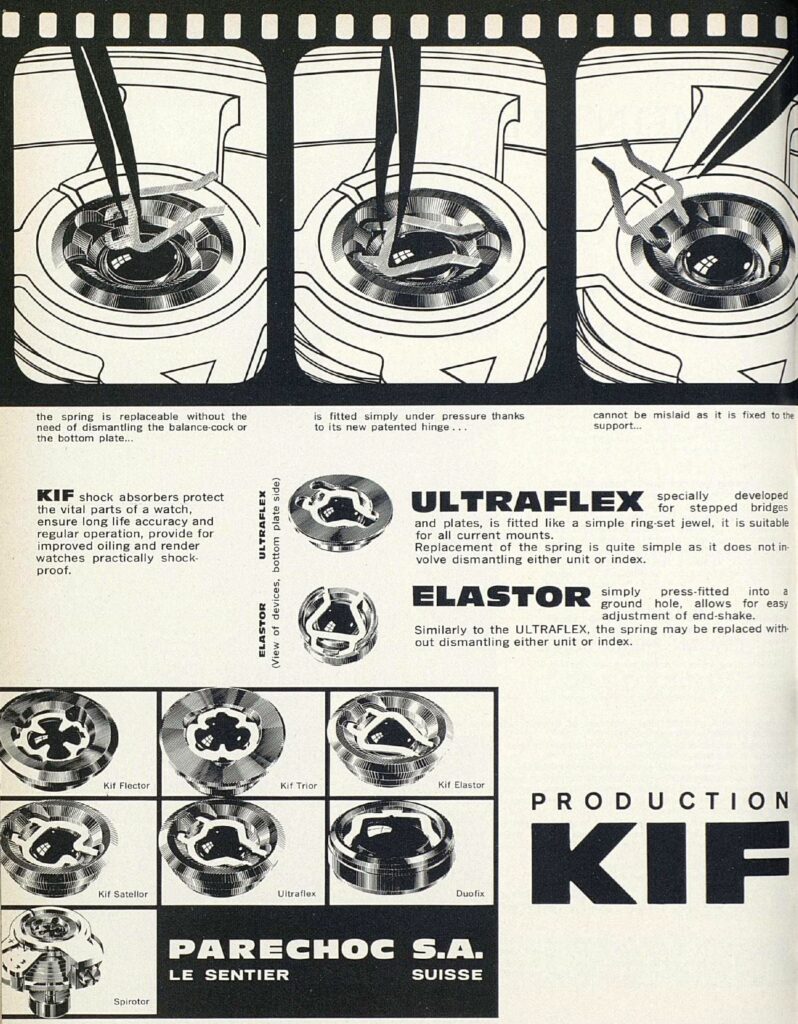
1968: Portescap Triovis
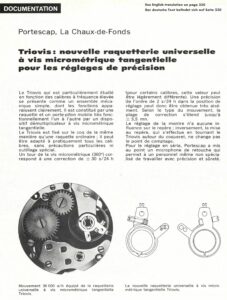
This 1968 advertisement from Europa Star shows the new Triovis micro-metric adjuster from Portescap. Initially aimed at the latest high-frequency (36,000 A/h) movements, it would find widespread use in many calibres launched over the next few years. Triovis allows easy adjustment thanks to the perpendicular screw, which keeps the balance spring perfectly aligned, and the fact that the pitch of the screw thread is calibrated to 30 seconds per day per rotation.
Triovis was used by many high-end movements, including the famous F. Piguet 1180 and Lemania 5100. In modern times, it has been used in the Chopard 01 and 03, Bulgari BVL191, Girard-Perregaux GP 3100 and GP 3300, Maurice Lacroix ML76, Nomos Alpha, Ulysse Nardin Freak, and Zenith El Primero. It is also fitted to modern versions of classic movements, including the ETA 2824-2 from IWC and Tudor and ETA 7750 from Omega, Graham, Panerai, and IWC.
Triovis: New universal index assembly with tangential micrometric screw for precision timing
Triovis has been designed especially for high frequency calibers. Its mechanism is simple and easy to operate. It consists of an index and mobile stud-holder linked together by a gear reduction device with tangential micro-metric screw.
Triovis is fitted on the cock in the same way as an ordinary index; it can be adapted to almost all calibers without any particular precautions or special tooling.
One turn of the micrometric screw (360º) corresponds to a correction of ± 30 s/d (this figure may differ slightly for some calibers).

A timing accuracy within 2 s/d ca be obtained therefore quite easily. According to the type of movement, the correction range extends to ± 3.5 min.
Timing the watch has no influence on the beat; putting into beat, which is done by turning Triovis round the top balance-end-piece does not change the count-point of the hairspring.
For timing in series, Portescap has developed an adjustment microphone which enables even unskilled staff to operate with deftness and precision.
